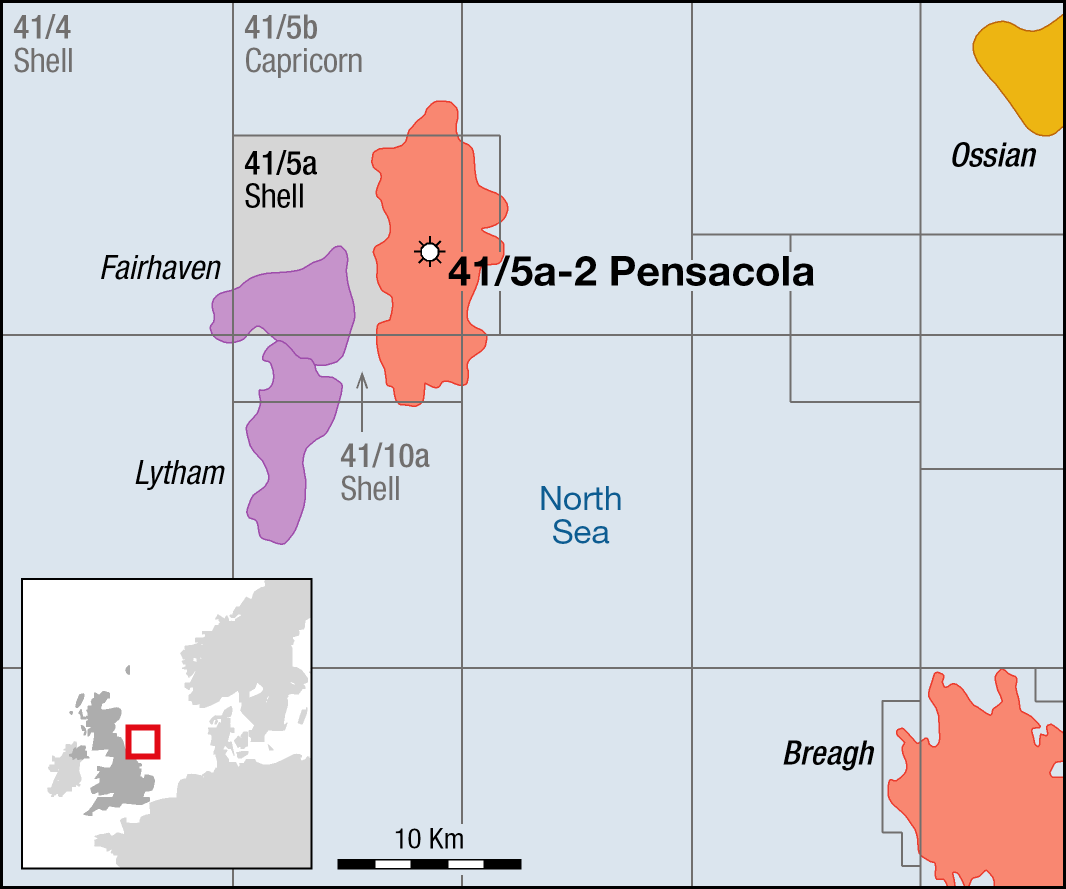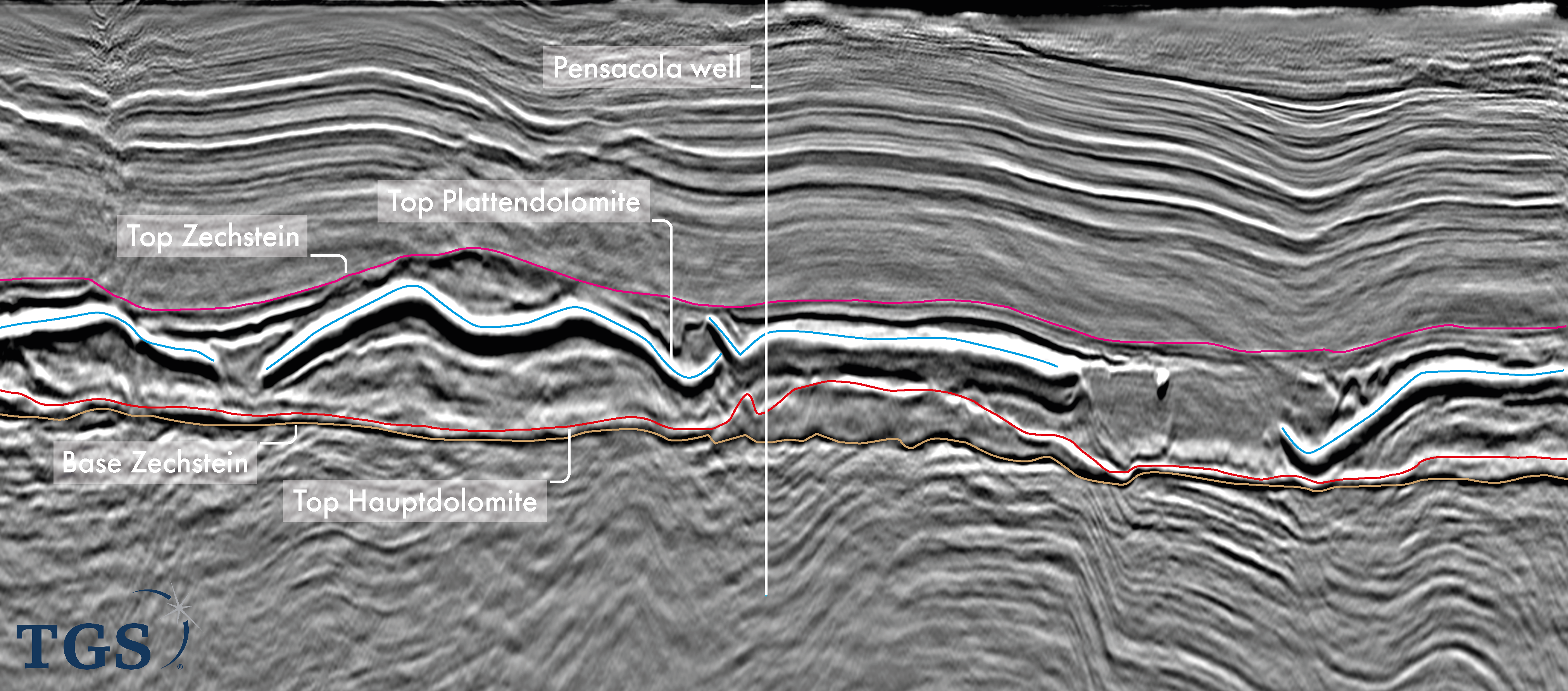The Pensacola well – 41/05a-2 – was spudded in November 2022. Deltic Energy worked up this Zechstein Hauptdolomite prospect, but with operator Shell farming in in 2019, drilling Pensacola became a lot more of a reality. The gas discovery was announced in January 2023, followed by a positive test result today that proved 302 Bcf (8.5 Bcm, P50) of recoverable gas. The well proved an average of 16% porosity carbonates of 18.8 m thickness. Some light oil was found too.
Pensacola is part of a series of isolated carbonate platforms that developed onto the southern margin of the Mid North Sea High in latest Permian times. The Pensacola platform has an elevation of more than 200 m above the time-equivalent basinal facies on either side, which is illustrated by the seismic line kindly provided by TGS.

Two source rocks?
The recently drilled Ossian Darach well (42/04-1Z) is another example of a discovery in this geological setting. However, Darach flowed oil while Pensacola contains mostly gas. It is likely that the underlying Carboniferous section is the main source for the gas. However, the Westphalian coals that are widely believed to be the main Carboniferous source interval are absent in the immediate vicinity of Pensacola, so long-distance migration needs to be assumed in that case. At the same time, a deeper Carboniferous succession may have been the dominant source, which then does not require long-distance migration. The oil source, as Mike Cooper from 1st Subsurface – Trove explained in a recently released video on the Pensacola discovery, could be within the Zechstein itself.
The well test results, which showed a peak of c. 4.75 mmscf/day declining to 1.75mmscf/day after 12 hours, are in line with expected results according to a Deltic press release. The company states that the flow rates are not representative of potential future production because the well is located at a down dip location of the structure (see seismic line). Future production wells will likely target the central part of the discovery.
These test findings are in line with what Mike Cooper further explained in his video, in which he explained that Zechstein carbonates are sometimes showing high initial flow rates, followed by a rapid decline and pressure depletion. Limited connected GIIP is the most likely explanation for this, and it is against this background that the test results from the vertical well may not be too representative. Long horizontal wells with multi-fracs are probably the solution to really tap into the full potential of the Pensacola reservoir.





